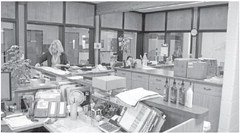Time to go back to drawing board to address high school needs


Last week voters in the Medford Area Public School District soundly defeated a $39.9 million referendum for expansion and renovation of the district’s high school. The no votes overwhelmingly outnumbered the yes votes in every voting precinct in the county, rural and urban, sending the clear message that voters did not want this plan.
That is the way democracy works.
There are winners and losers with every vote. Unlike in the fall where there was some ambiguity and a narrow margin between the yes and no votes, the intent of the voters this time around was loud and clear. Going forward the challenge for the district is how to address the very real issues which exist at the high school. The district will have to address the infrastructure needs at the building, both the physical of replacing pipes and upgrading HVAC, and the digital of how to embrace the technological tools of 21st century classrooms.
The district will have to address the security concerns of a school that was designed to have its doors and windows kept open. It will have to figure out ways to cut down the condensation that makes navigating lower level hallways on humid days a nightmare.
The district will have to do something to ensure the science and technology classroom spaces allow teachers to prepare students for modern workplaces and provide them flexibility to match the layout to the lesson.
The district will have to address concerns with space and accessibility, particularly when dealing with students with special needs, regardless of how those needs involve the classrooms, home life or the courts.
It would be easy for the school board to interpret the election results as showing that the people of the district don’t want to see growth or worse, that they may not care at all about the future of the school. These would be unfair oversimplifications.
The voters rejected the $39.9 million building renovation. They rejected a specific plan, some because they felt it was too much, others because they felt it did not go far enough.
It is time for the district to go back to the drawing board. With at least a year before any referendum can be brought back to the voters, the school board has time to fine tune and focus on addressing the needs of the district. This will be an opportunity for the three newlyelected board members to bring new insight and ideas to the process.
A great deal of time, energy and hard work went into getting the referendum to the voters. Despite the outcome of the election, that work was not in vain. It can provide a foundation for the board to build on in the future, whether it is next year or further down the road.

